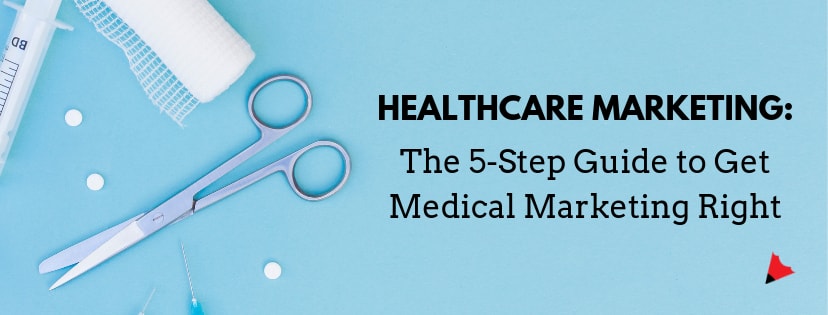
83% of patients visit a hospital website before booking an appointment.
That statistic says a lot about the changing behaviour of patients and individuals seeking medical assistance.
In fact, 66% of ALL internet users search online for information about specific medical problems or diseases. (Source)
What do these stats actually mean?
In simple words, patients (your potential customers) are able to get answers to medical queries using a simple Google search.
They’re also able to get in-depth details about other healthcare service providers (your competitors) who have really figured out the art of healthcare marketing.
In the past, patients and seekers of medical services utilized the expertise of doctors and hospitals that were in close proximity.
There was the highly-common concept of family doctors and referrals that helped the best healthcare providers secure business.
Fast forward to today, patients are relying on the internet to self-diagnose themselves before choosing the right treatment provider upon thorough research.
This self-diagnosis process is the most crucial step for your healthcare company.
There used to be a time when your marketing team used to create flyers and brochures for patient information and distribution. But as you read this article, we both know how much that’s changed.
Digital marketing elements such as SEO, content marketing, social media, paid advertising and analytics have clearly overshadowed the traditional marketing model.
As a digital agency, we notice loads of healthcare providers struggle with medical marketing, and that’s the reason their revenue drops year-after-year.
In such a digitized ecosystem, having a dull online presence will pretty much stall your healthcare practice.
This may be a bold statement, but I’ll say it regardless.
Be prepared to lose your customers to those who are better at marketing their medical services.
Anyways, I won’t take up any more of your time with an intro when there are more underlying issues to address, such as your healthcare marketing strategy.
In this blog article, you’ll find 5 inter-connected healthcare marketing techniques that will completely transform the way you market your medical business.
And the best part is -
ALL the tips and techniques in this article can be applied to medical service providers of all sizes, including e-commerce platforms, consultants, hospitals, clinics and medical product manufacturers.
5 Crucial Marketing Steps All Healthcare Companies in the UAE Should Follow, Regardless of Size and Business Model.
Step 1: Identify and Document your Target Audience
I'm sorry if this wasn’t the first advice you were seeking, but that’s the most crucial thing I’ve learnt as a digital marketer.
First get your patient personas correct.
Everything else can follow.
If you are targeting everyone, then you’re targeting no one.
That’s why I’ve placed patient persona creation at the top of your medical marketing strategy.
Your messaging may be good, your copywriting may be creative, your designs may be edgy and your budget may be well above average, but if you don’t know who you’re targeting, all your marketing budget is going down the drain.
The patient personas you create should be congruent to your business model.
Are you targeting high-income patients?
Medical equipment retailers and distributers?
Seekers of specialized treatments that your niche caters to?
It’s your duty to identify and jot these details down as clearly as possible.
So who are these patient personas?
In a nutshell, they’re a fictional representation of your ideal customers/patients.
It’s like talking to an imaginary person who’s the best customer for your business.
You can learn the complete art of creating patient personas using my article below:
Once you figure out your target audience, the rest of the marketing process becomes significantly easy because you are walking in their shoes and talking to them in the language they understand.
Doing so will not only affect your website’s search rankings (more on this further below), but also improve the conversion of your ads, eventually bring more footfall.
Step 2: Have a Website that Builds Trust among Treatment-seekers and Customers
94% of people say bad design is the main reason they don’t trust certain websites.
For an institution that’s built on trust, that’s a very important statistic.
Having a decent, mobile-optimized and responsive website is more than just a marketing tool.
It’s now a reputation management catalyst.
No matter how qualified your doctors are, or how excellent your patient success rate is, a poor website will always create a bad impression.
So, how exactly can a medical institution increase patient leads using their website?
It’s very simple, although it does involve time and effort.
First: Stop treating your website as a sales brochure. It’s way beyond that.
Second: Make sure the website loads on mobile phones quickly.
Remember! Users are spending an average of 0.05 seconds on deciding whether to stay on your site or leave.
Your window to impress them is painfully short, so why not make the most of it?
If you have an internal digital team, great!
Ask them to optimize your website so that it loads faster, with the content displaying accurately on screens of different sizes - mobiles, tablets, laptops, etc.
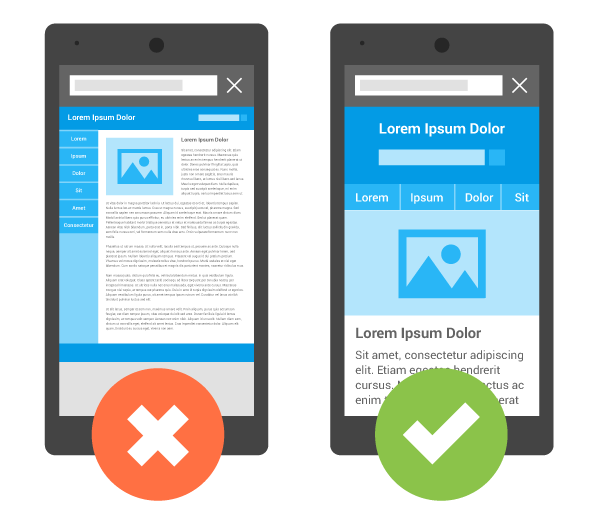
In case you don’t have an in-house web design team, you can get in touch with website development companies like us.
We’ll do a quick audit of your current website, recommend improvements and even implement them, to help you become the market leader in your segment.
Anyways,
Third: Ensure that your website is accessible for patients and those seeking information.
Your website visitors shouldn’t have to browse through piles of pages and data to find simple information like doctors’ credentials or contact details.
Instead, aim for easily-navigable sections to make the web experience a breeze.
In a market like UAE, where medical insurance is so prevalent, make sure you display the names and details of insurance companies that your medical practice accepts.
Apart from that, give patients the option to book an appointment online, because we’re in the 21st century.
One of our clients, Pearl Dental Clinic recently revamped their website to make it more digital-friendly.
Here’s a quick screenshot of their new website.
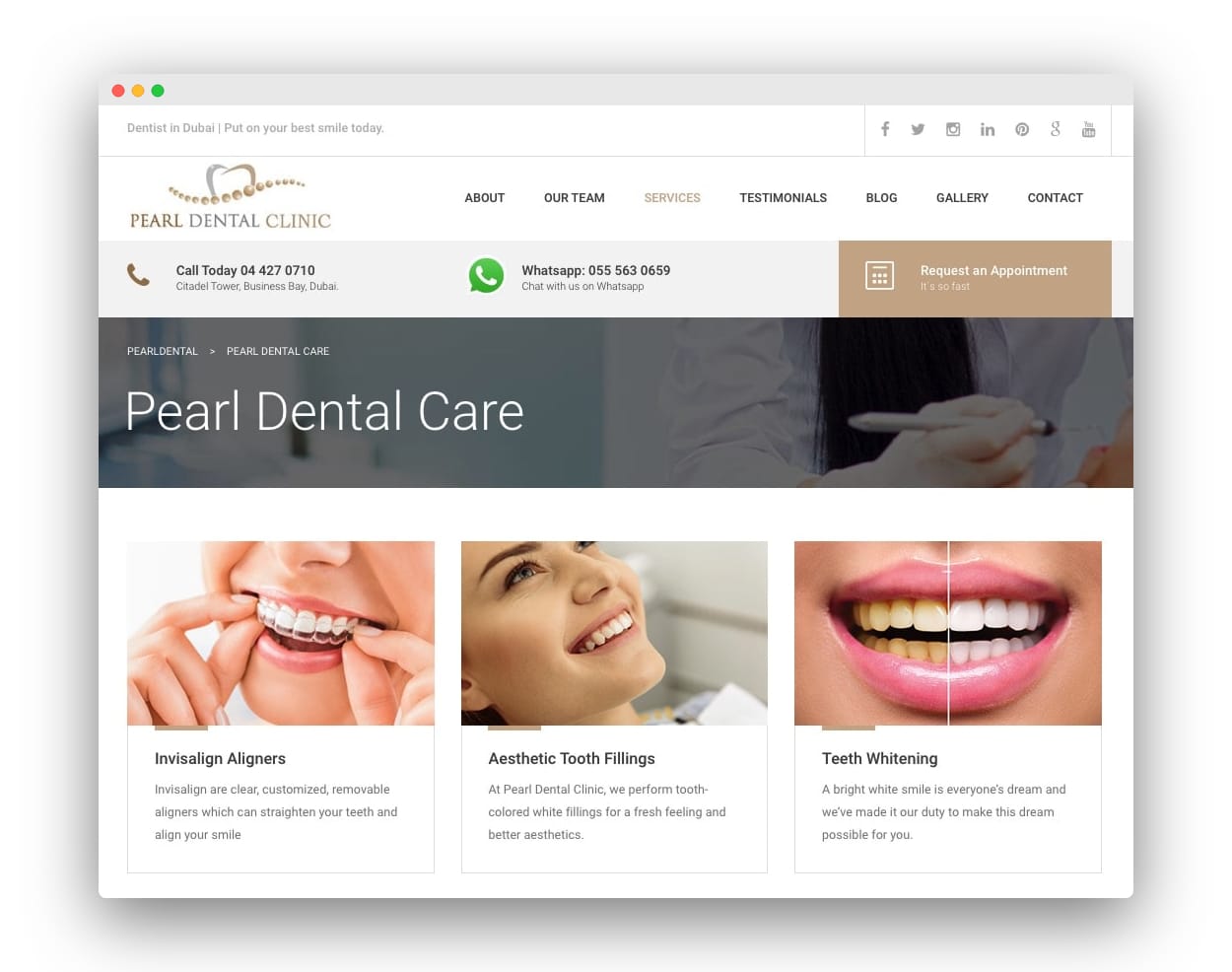
You’ll notice how we kept the contact details prominent (on top).
Website visitors now have the option of either calling the clinic, sending a Whatsapp message, or setting up an appointment online.
And that’s one way of making a medical website user-friendly.
Step 3: Get your Website Discovered on Google using Search Engine Optimization (SEO)
Just having a website is not enough.
You must work on getting it found on Google (and other search engines).
SEO, or search engine optimization is essential because it helps your website get noticed by people who are looking for your medical services.
It’s a crucial component of your healthcare marketing plan because without SEO, organic traffic is as good as zero.
You can start with optimizing your website’s technical structure, and then adding relevant keywords throughout your content.
These keywords should be based on research and powered by the data that you have on our target market.
For example, if you are a chiropractor in Dubai, you might want to use a locational keyword such as “chiropractor dubai” as well as a long-tail keyword that your patients might be searching for such as “how to get rid of lower back pain?”
Think about relevant keywords when you create content for your website, as these will help you found by your leads when they’re looking for services provided by you.
Something worth noting:
SEO is NOT a one-time marketing campaign, but an ongoing, long-term one.
Your objective should be to regularly analyze keywords that you can rank for, based on its search volume, competition etc.
As the digital behavior of your target market evolves, so should your list of targeted keywords and SEO strategies too.
To learn more about SEO and how it can improve your medical marketing efforts, refer to the article below:
Step 4: Use Targeted, Appealing, and Newsworthy Content to Educate your Potential Customers
People avoid ads.
They are not intentionally reading ads from top to bottom while browsing through social media.
What most medical marketers fail to understand, is that people are minding their own business on the internet.
They want to be either entertained, educated, or connected with family and friends.
That’s why your advertising strategy should focus on being seamless, instead of being intrusive.
You should focus on marketing using content that fulfills the prospects’ need.
In other words, you should approach healthcare marketing from a holistic, inbound point-of-view.
I don’t disagree with running social media ads to promote your medical practice.
That’s just a small component of a larger medical marketing strategy, predominantly powered by content.
But, would you believe that 70% of consumers prefer learning about a company through custom content than through paid advertisements?
Content that’s helpful to your target audience can boost lead generation using your website and social media channels.
Content powered by SEO will help you build reputation online, and gain the trust of first-time customers.
You can create content for medical marketing in the following forms:
1) Blog posts:Blogging consistently is like maintaining a good oral hygiene.
It helps you be more appealing, credible and taken seriously in the digital space.
It provides your target audience with hyper-relevant information that resonates with them.
It’s also an essential part of inbound marketing for healthcare companies.
And the best part is - blogging is good for SEO, which helps you rank higher in search results.
See how healthcare brands in the UAE like Kaya Skin Clinic and Cryo have been investing time and efforts into creating informative blogs that build credibility for their medical institution.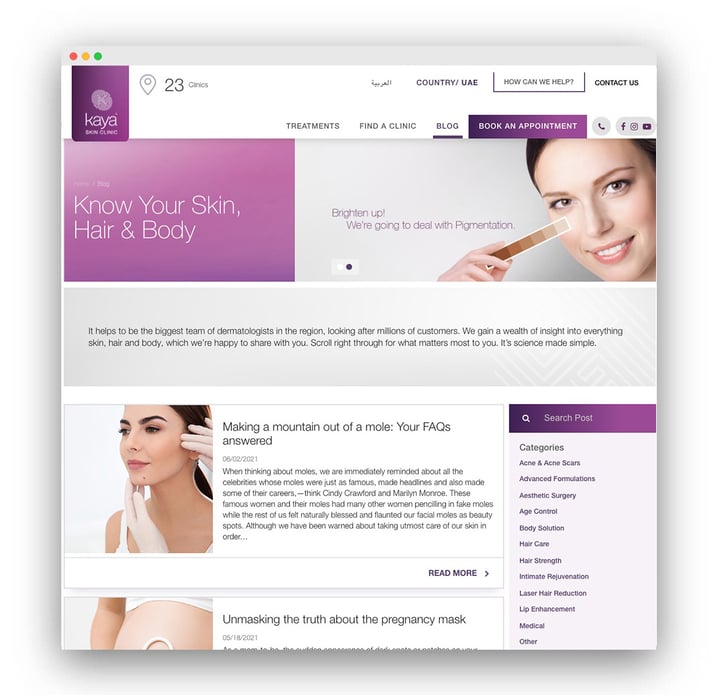
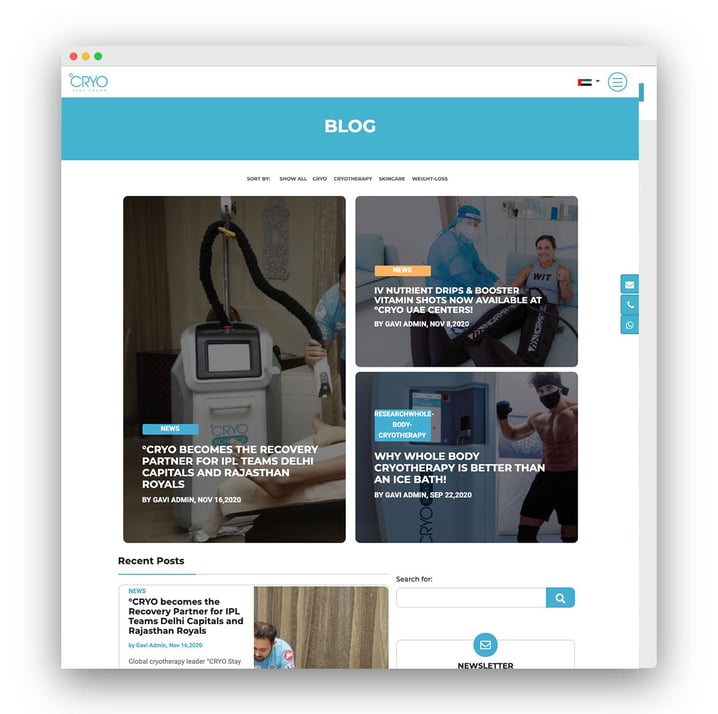
Do you know why they focus on blogging so much?
Because it increases website traffic up to 6x!
If you're a full-fledged hospital, here’s one tip to help you publish consistently, without having to worry about your next article topic.
Address various diseases your hospital can treat and turn that information into blogs.
80 percent of Internet users have searched for a health-related topic online, according to a study released by the Pew Internet & American Life Project.
So, if your hospital specializes in certain medical treatments, it’s a great idea to blog about those diseases.
This helps in better educating patients before they set up an appointment with you.
2) Videos:
Consuming videos is far more convenient than the written text, so why not start investing in creating videos related to your specializations and related topics?
Videos could of multiple formats - animated, professionally-shot, or even selfie-videos using the front-camera for quick go-to information bites.
Topics like general diagnostics, customer testimonials, treatment explanations, medical procedures, etc make great fodder for your video content.
Take the example of INNOVO® - a medical technology solution that helps in the safe and effortless treatment of urinary stress incontinence.
Over time, they’ve amassed a decent collection of videos containing success stories of their customers.
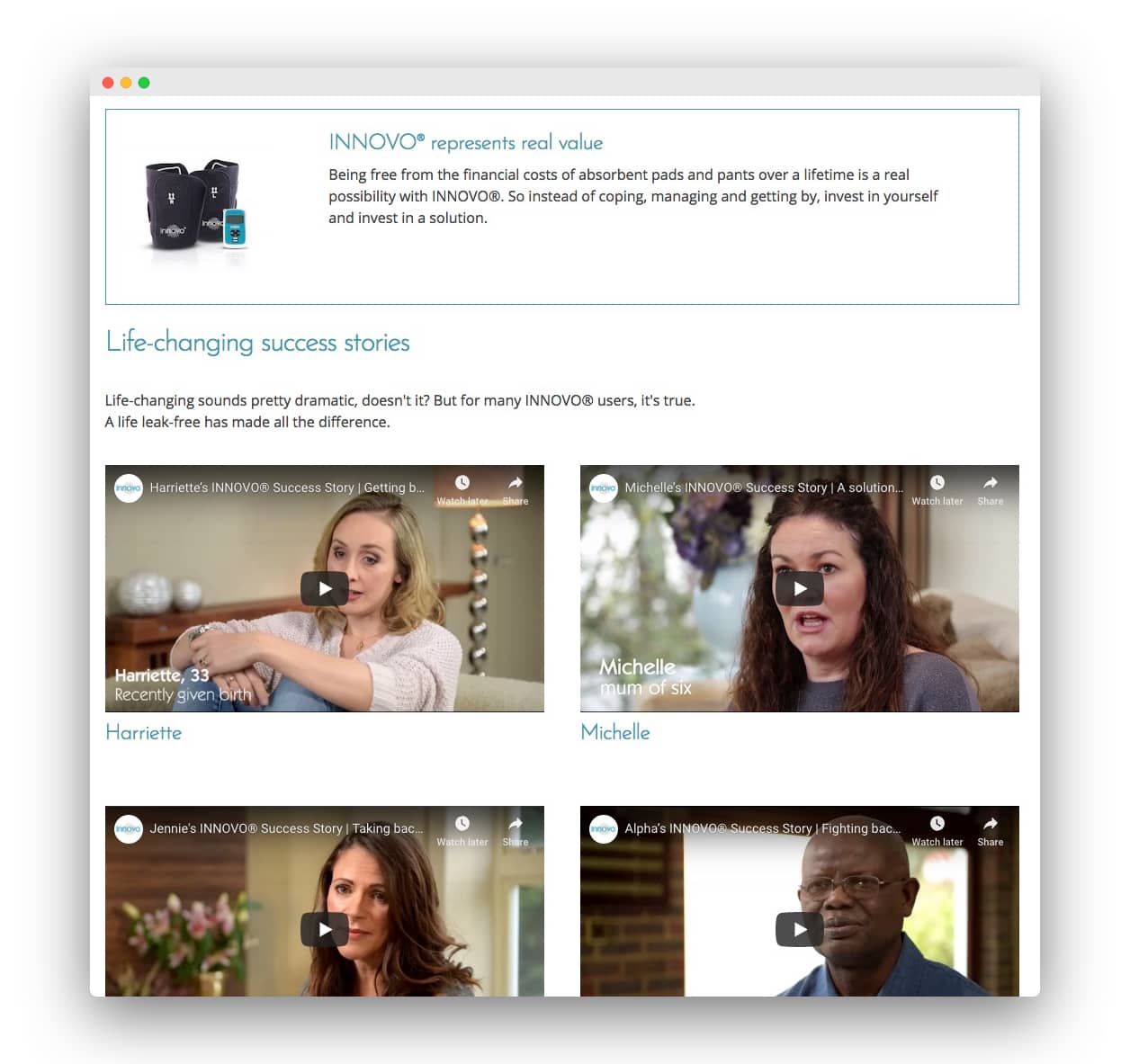
This first-hand review of their products builds a lot of positive influence around people who are hesitating to give it a shot.
Apart from blogs and videos, there are other pieces of content you can offer on your website, like ebooks, whitepapers, case studies etc.
The immediate focus shouldn’t be on how well the content turns out.
It should be on creating something of value consistently, while gradually improving its output quality as your budget permits.
Step 5: Use Social Media to Distribute Content and Connect with Leads & Customers in Real-time
Social media is an excellent tool for connecting medical professionals with their patients.
In fact, 60% of doctors agree that social media contributes towards an improved quality of care delivered to patients.
One of the biggest advantages of social media for medical marketing is the ease of accessibility and targeting options available.
Combine that with the 2 hours & 56 minutes average daily time spent on social media, and you’ve got a good chance to reach potential customers everyday.
How can you then, as a medical service provider, make a difference on social media?
A statistic worth noting here is:
41% of patients stated that social media influenced their decision of selecting a medical practitioner.
You can only imagine the opportunities lying ahead of you to educate, impress and generate more clients for your medical centre.
Following are some immediate tips to leverage social media for your healthcare business:
- Encouraging your existing customers & patients to connect with you on social media;
- Publishing and sharing the content you produce - photos, new doctor arrivals, videos etc.
- Answering questions and clarifying questions laid down by potential patients;
- Becoming a thought-leader by sharing valuable health tips to promote healthy-living;
- Helping your patients get better information on their health through your social channels.
Social media marketing helps your healthcare organization create a friendly and more approachable image, thereby removing the stigma of medical fear and its associated seriousness.
If you look at the chart below, the popularity of social media for medical marketing is fairly obvious. So why not incorporate it into your overall healthcare inbound marketing strategy?
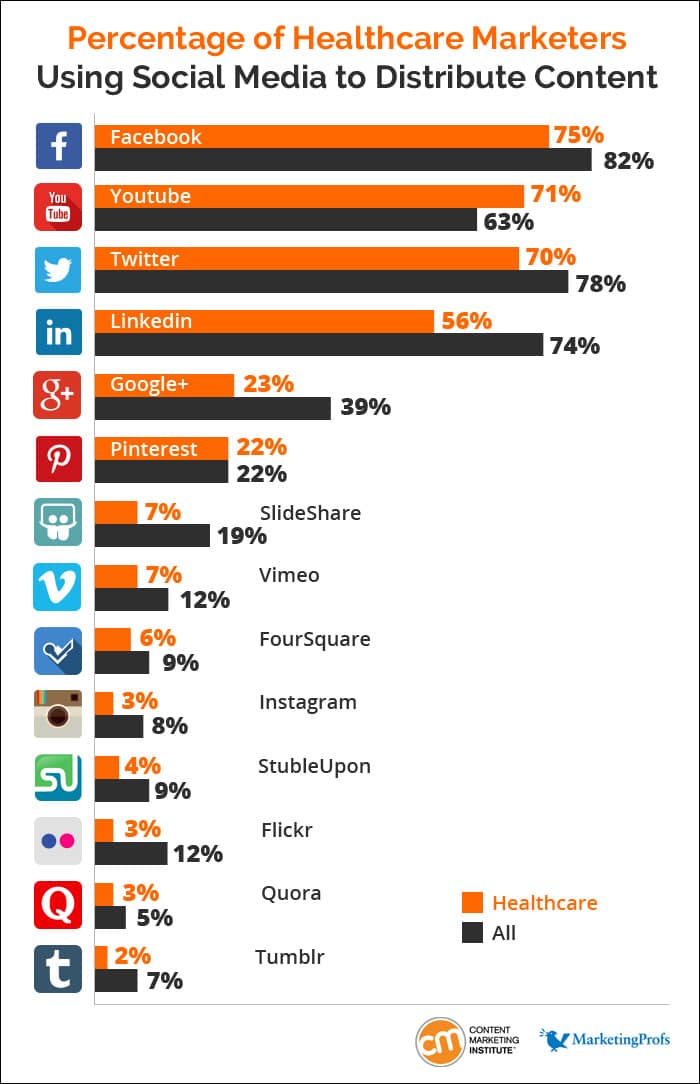
Conclusion:
Marketing for the medical industry may appear daunting at first.
But fret not, because the ideas and examples given in this guide, if applied accurately, will definitely start giving you ample results for your medical institution.









